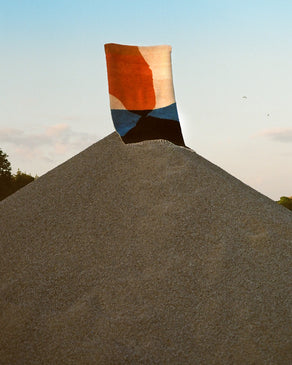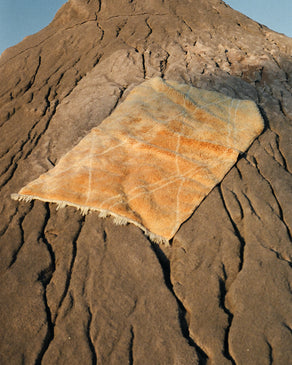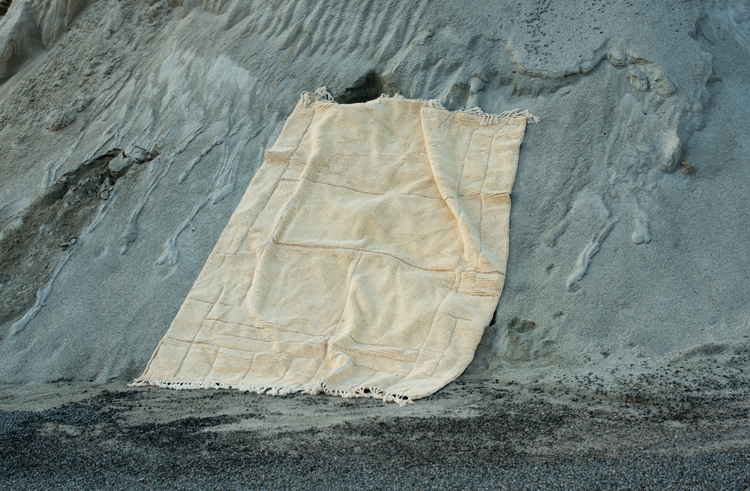About
In Rugstories, we combine our love for traditional craftsmanship with contemporary design.
Our rugs are packed as they have been for years in traditional Berber cultures: wrapped in paper and tied with a string. We care about the transparency of the process behind making a rug and for the people behind this process. We value exceptional aesthetics, timeless quality, and sharp attention to detail. We are looking for unique vintage rugs, while also designing new patterns in order to exceed the expectations of good design lovers. The rugs complement contemporary interiors, especially those with a hint of eclecticism. We believe that each creation tells a story, one that we want to share with you.


Rugs
Moroccan Berbers living in rural, remote areas of the Atlas Mountains have been weaving rugs for hundreds of years. Traditionally, Berber rugs were made solely by women, who were decorating their homes in preparation for the colder months to come. In the present day, women are still the ones who are responsible for crafting these beautiful creations, while men take care of the sheep and obtain wool for these rugs.
The wool is dyed using natural raw materials – soil, herbs, tea leaves, figs, pomegranate and henna.
The process of crafting a rug is extremely complex and time-consuming. Usually, men shear the sheep once a year during the warmest season, collecting their wool. Women bring the obtained wool to the river, where they rinse it of any residual dirt and grease. After the wool has been cleansed, they comb the wool and spin it into long strings of yarn. Once the yarn is finished, it is dyed and left out to dry in the sun. This is when the weaving process begins. Hand-weaving the carpet can take anywhere from several weeks to months. When the rug is finished, it is washed and left to dry in the sun, in order to get rid of left-over dirt and soften the fabric of the rug. This can take one or even several times to ensure that the rug is perfectly soft and cozy. Following this process, the wool is then dyed using natural raw materials, such as soil, herbs, tea leaves, figs, pomegranate, and henna. Just as often as dyeing the wool, the natural creamy hues of undyed wool are used in the process. The names of the rug types are often related to the tribes who created them. Each tribe has its own unique style and pattern, depending upon the availability of raw materials and the prevailing climate of their region, as well as the breed of the grazed sheep.
Traditionally, rugs are entirely handmade, which makes them truly unique. No two rugs are the same. Each is completely inimitable, telling its own story.



BENI OURAIN
Beni Ourain is a group of seventeen tribes inhabiting the Middle Atlas of the Atlas Mountains. Their rugs are among the most valued, due to the high-quality wool used in the production process. The rugs are characterized by their minimalist design and monochromatic, geometric patterns: the base is usually undyed, cream-colored wool and the patterns are usually dark brown. These rugs are very soft and warm, due to the long yarn used in the process. Vintage Beni Ourains do not exceed 220cm in width - if they are larger, they are most likely new.
AZILAL
Azilal rugs are made by tribes from the High Atlas range of the Atlas Mountains. They are distinguished by their expressive, abstract patterns, often rich with hidden meanings and symbols usually written in Tamazight - one of the main Berber languages. The rug’s base is made of natural, undyed wool. The patterns are woven from yarn made of bright and bold colors.
BENI M'RIRIT
The Beni M’ririt tribes inhabit the western part of the Central Atlas. Their rugs are characterized by darker, bolder colors. Due to the Beni M’ririt communities living in higher elevations of the Central Atlas than any other tribes, their rugs have a shorter pile and a more dense weave, in order to provide adequate protection against the cold. Older Beni M’ririt models are characterized by extensive colors, but are simultaneously devoid of clear patterns. They started implementing patterns, such as rhombus patterns, due to the influence of the Beni Ourain tribes, located about 200 kilometers away.
Care Instruction
Our rugs are made entirely of sheep’s wool. Therefore, in the natural process of use, they may occasionally lose fibers. Regular vacuuming and airing the rugs will keep them in perfect condition for a long time. In case of staining, we recommend rinsing the stain quickly with warm water and a cloth. We advise against using strong detergents that can damage naturally dyed wool. If your carpet needs thorough cleaning, we recommend using a professional laundry service.




